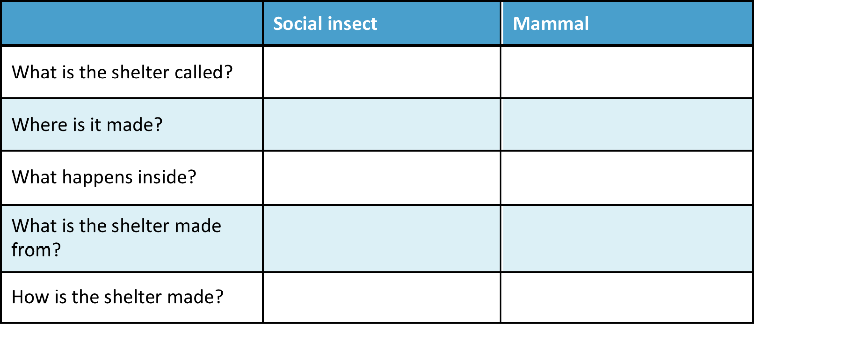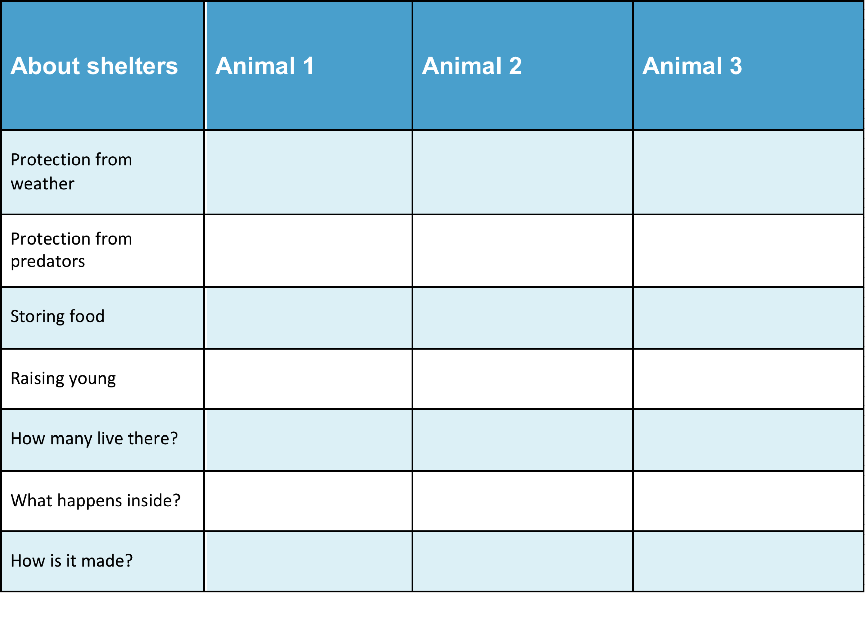Information for Teachers
Curriculum links
Australian Science Standards
BS (ACSSU73) Living things depend on each other and the environment to survive
GS (ACHASSK088) The importance of environments, including natural vegetation, to animals and people
New Zealand Science Achievement Objectives
LW: The key structural features and functions involved in the life processes of plants and animals
Helpful websites
Students can use words like these in doing their search:
animal+hollow
bird+nest+social
How to search the internet
1 Keep your request short
Fewer words will give a more accurate search.
2 Choose exactly what you want
For example: Arctic Circle Climate
3 Use quotes
Double quotes around a set of words tell the search engine to consider those exact words in that exact order without any change. For example: “Arctic Circle Climate”
4 Use the plus sign (+)
If you add a plus sign (+) between words, the internet will search for all the words. For example: migrate+birds+whales+mammal
5 Use the minus sign (–) to say what you don’t want
Use a minus sign (–) to show words you do not want to appear in your results. For example: if you search for burrowing animals and do not want mammals in your search, –mammals will exclude mammals. Note that you need to put a space before the minus sign for the word to be excluded.
6 Be very clear about what you don’t want
Part 1
Ask questions and make predictions
As you read Animal Shelters, you may have many questions about the shelters of animals that aren’t mentioned in the book.
List your questions
- Compare your list with questions that others have.
- Choose a question you would like to investigate.
- You can work alone, with a partner or in a small group.
You may want to choose one or more of these questions to investigate
Q1. Compare the shelter of a social insect (bees, ants, wasps) with another social animal, such as prairie dogs, beavers, and weaver birds.
Q2. Investigate animals that use the shelter of another animal for raising their young, or protection.
Q3. Find out about animals that share their shelter with another species.
Go to Part 2 Plan and investigate →Part 2
Plan and investigate
Do searches in the internet or in books or talk to people who can help to find the information you are looking for.
Your teacher may suggest suitable websites for further information.
Go to Part 3 Record and analyse data →Part 3
Record and analyse data
Find a way of recording your information that will allow you to see any patterns in the data.
Data Chart for Animal Shelters
 Download Chart
Download Chart
Go to Part 4 Evaluate the information →
Part 4
Evaluate the information
1. Look over the information you have gathered and the patterns you have found.
How does the shelter help the animals you chose? Why do they need to do this?
2. Search for other patterns.
Do these animals always use this shelter or do they just use it for a short time? Why?
What might happen to these animals if they do not have their shelter?
3. Make notes about what you find.
Go to Part 5 Communicate and share ideas →Part 5
Communicate and share ideas
Look over the information you have gathered in your investigation.
What are the most important ideas about animal shelters?
Make a chart showing the most important ideas.
 Download Chart
Download Chart
← Return to menu
